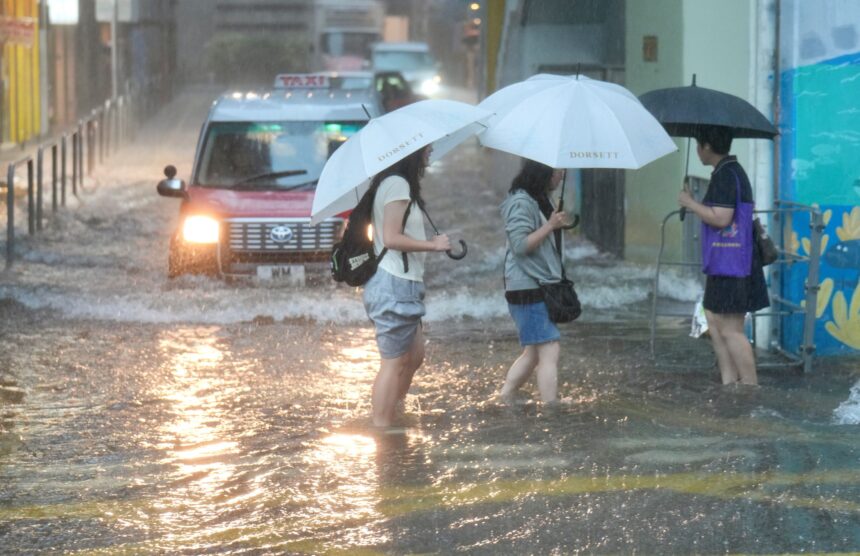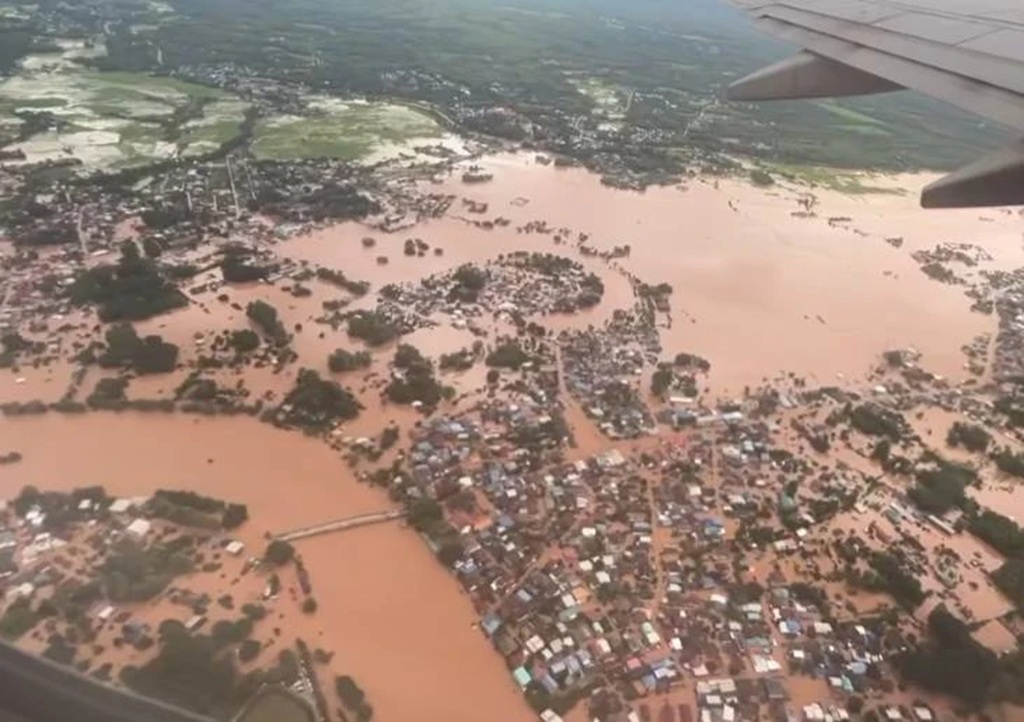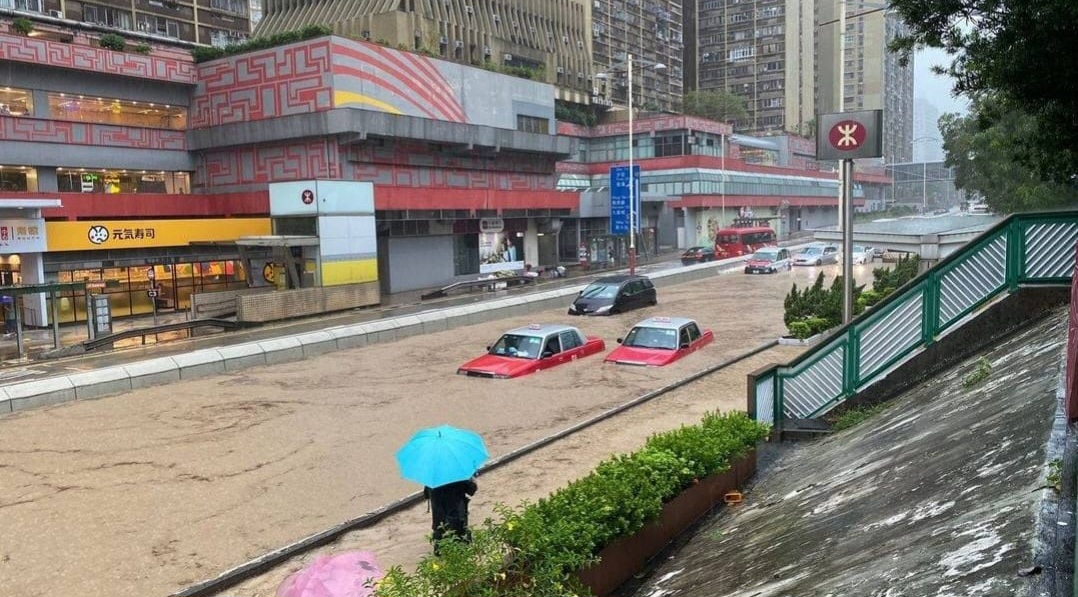HONG KONG – The Hong Kong Observatory issued its most severe “black rainstorm warning” for the fourth time in eight days, an event not seen before in the city’s modern history. Rainfall reached over 355 millimetres, the most ever recorded in a single day in 141 years.
Roads turned into fast-flowing streams, stairways became cascading torrents, and many public services were forced to halt. This heavy rain is part of a larger pattern affecting Southeast Asia, with local weather experts naming climate change and the effects of El Niño as major causes.
The Hong Kong Observatory operates a rainstorm alert system designed to warn people about serious weather that may cause flooding or landslides. The alerts have three levels: Amber, Red, and Black. Black is the highest level and is sent out when rainfall goes over 70 millimetres per hour.
This week’s black warning lasted 11 hours and 15 minutes, making it the second-longest on record, just behind the 16-hour event during the major floods in September 2023.
When the black signal is activated, schools shut down, public transport slows or stops, and non-essential workers often stay home. Emergency teams prepare to respond to floods and landslides, a crucial step in a city surrounded by steep hills and packed urban areas.
Tuesday’s rain was pushed by a strong southwest monsoon and unstable conditions over the Pearl River Estuary, bringing as much as 90 millimetres of rain in a single hour and almost 10,000 lightning flashes between 6 and 7 a.m.
Hong Kong Responding to the Downpour
These unending rains have truly tested Hong Kong’s readiness. Major roads were blocked by floodwaters; many cars were stuck underwater in car parks. Water even pooled outside Queen Mary Hospital, leading to emergency patients being redirected to another hospital.
The city’s Drainage Services Department used robotic pumps and over 180 teams to clear more than 240 areas known to flood, while fire crews rescued drivers from vehicles stranded in Tseung Kwan O.
Local people met the flood with a mix of determination and worry. Ruchir Desai, a fund manager who has lived in the city for 14 years, said he was used to getting through rough weather. Others, like Connie Cheung, a 65-year-old assistant nurse, found the severity of the flooding shocking, reminding many of the 2023 disaster, often called a “once-in-500-years” flood.
Despite Hong Kong’s well-developed infrastructure, back-to-back heavy rains pushed these defences close to their limits. Schools, law courts, and public services—including the post office and immigration offices—closed for safety.
Over 100 flights at the airport were delayed. In a display of the city’s determined spirit, even with the challenges, Hong Kong Disneyland stayed open, though it ran on a smaller scale.
The government drew some criticism for its response. During the 2023 floods, officials were accused of not acting quickly enough. This time, leading figures like Eric Chan, the city’s chief secretary, stressed flexible work options and asked the public to stay alert.
The Education Bureau suspended all classes, and temporary shelters were set up to protect those in need.
Wider Impact Across Southeast Asia
Hong Kong is not alone in dealing with such extremes. Much of Southeast Asia has been hit by heavy rain, with a stalled East Asian monsoon and changes linked to global warming making things worse.
In Thailand,
Across the border in China, flooding has led to many deaths and forced over 80,000 people to leave their homes in regions like Beijing, Hebei, and Guangdong province.
In southern China, flash floods killed five and caused widespread problems. India, too, is suffering. The World Meteorological Organization points out that flood risks are rising in South Asia, especially in large cities like Mumbai, where unchecked building has filled in valuable floodplains. Some forecasts suggest as much as 80 per cent of Mumbai could be underwater by 2050 if trends continue.
Weather Forces and The Impact of El Niño
Weather experts link this year’s extreme rainfall to a series of factors. The East Asian monsoon, which usually reaches its peak during the summer, has lingered longer over parts of China, leading to constant heavy showers.
There’s also the shift from El Niño to La Niña, which usually means wetter conditions for Southeast Asia and India. Warmer ocean waters during El Niño periods can disrupt global weather, and the move to La Niña is expected to keep rainfall high throughout 2025.
Climate change is making these weather swings stronger and more frequent. Scientists warn that rising temperatures worldwide are causing more events like these. The record-setting rains seen in Hong Kong in 2023 and 2025 are clear signs of this increasing trend, and black rainstorm warnings are becoming more common.
As more wet weather is expected in the days ahead, Hong Kong and its neighbours are focusing on coping and being ready. The Hong Kong Observatory has issued warnings for further rain.
Governments around the region feel pressure to step up weather forecasts and improve infrastructure to limit future damage. For now, people from Chiang Rai to Hong Kong are adapting to weather that is both heavier and more uncertain than in the past. Rain, once a regular seasonal feature, now brings greater risk as the climate continues to shift.
















